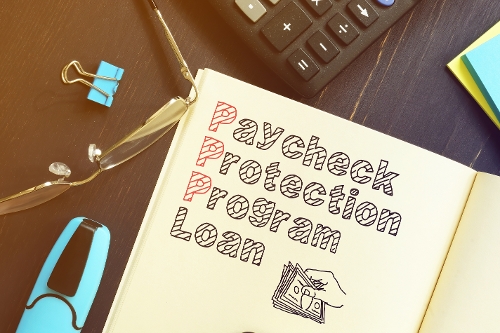
July 8, 2020
The Federal Paycheck Protection Program (PPP) has been rapidly evolving since its inception at the beginning of April, and this past week has been no different. In a recent publication the Small Business Administration released their Interim Final Rule which refined the terms of the PPP Flexibility Act and introduced two new application methods. This is a review of where the PPP loan forgiveness rules stand at this point.
General Information
Under the original PPP law, small businesses who received a PPP loan had eight weeks to use the funds. As long as they used the loan proceeds for qualifying purposes, the entire loan could be forgiven. Under the new law, the 8-week period was extended to 24 weeks, or December 31, 2020, whichever occurs first. This means that for any loans disbursed on or after July 16, the borrower will not be able to take advantage of the full 24 weeks. Borrowers do have the option to elect the 8 week covered period if they received their loan before 6/5/2020. If the 8 week period is elected, owners are capped at $15,385 per individual or the lesser of 8/52 of 2019 compensation. Otherwise, the cap is $20,833 under the 24 weeks. The Small Business Administration (SBA) has stated this is to be applied across all businesses.
The lender has 60 days from receipt of complete application to issue a decision to the SBA.
If the borrower does not apply for loan forgiveness within 10 months after the covered period has ended, it is then considered a loan.
The loan maturity is a minimum of 5 years for all PPP loans made on or after 6/5/2020 and permits borrowers to extend the maturity date of earlier PPP loans by mutual agreement with lender. This maturity time frame was originally 24 months.
The beginning of the covered period has not changed and is still at either the date of disbursement or alternate payroll covered period.
What can cause a reduction in loan forgiveness?
There are several qualifications to receiving PPP loan forgiveness that must be met in order for the loan to be completely forgiven. While spending the PPP loan on qualified items may seem very straight forward, things can become complicated if the employee headcount and pay levels fail to remain the same. Things that can cause a reduction in the forgiveness amount are:
- A reduction of Full Time Equivalents (FTEs). In order to receive forgiveness in-full, the borrower must have maintained the number of FTEs they originally claimed on their PPP application. There is an exemption for those employees that were on payroll as of 2/15/2020 and were laid off and placed on furlough, if they reject the borrower’s offer of re-employment. Borrowers are required to inform the applicable state unemployment office of any employees who rejected their rehire offer within 30 days of said offer. In addition, if the borrower restores FTEs by 12/31,2020 there is not a reduction in forgiveness.
- The borrower may also qualify for additional exemptions if they document the employee:
- Was fired for cause
- Voluntarily resigned
- Voluntarily requested and was granted a reduction of payroll hours
- If the employee’s pay has a greater than 25% decrease over the covered period versus the most recent quarter in which they were actively employed, the forgiveness amount will be lessened by the difference between their current pay and 75% of their original pay. This is subject to an exemption for borrowers that have eliminated the reduction on or before 12/31/2020.
- If there is an inability to hire similarly qualified employees for unfilled positions before 12/31/2020.
- If there is an inability to return to the same level of business activity that was occurring before 2/15/2020 due to government mandate. An example of this would be, a hair salon not being permitted by the state to offer nail services, so the borrower would not have to reduce under this circumstance. ?
How to apply for a PPP Loan Forgiveness
There are two new applications available starting 6/30/2020 through the borrower’s original lender. Forms 3508EZ or 3508 have been newly introduced in the last wave of PPP loan updates.
A borrower may use the Form 3508 EZ if:
- They did not reduce salary/wages by more than 25% during the covered period, or alternative covered period, compared to 1/1/20-3/31/20 AND
- They did not reduce their FTE count between 1/1/20 and the end of the covered period, on or before 12/31/20. Exceptions may apply as detailed above, if the borrower was unable to operate due to government compliance.
If the conditions of the Form 3508 EZ are not met, Form 3508 must be used along with the filing of Schedule A. Filing the Form 3508 rather than the EZ does not necessarily indicate the loan forgiveness will be reduced.
Access to these two forms can be found on the SBA website at https://home.treasury.gov/system/files/136/PPP-Forgiveness-Application-3508EZ.pdf (Form 3508 EZ) or https://www.sba.gov/document/sba-form-3508-ppp-loan-forgiveness-application-instructions (Form 3508).
For assistance calculating PPP loan forgiveness or for details on how this may apply to your particular situation, please contact your Faw Casson advisor. If you missed the 6/30/2020 deadline for a Paycheck Protection Program (PPP) loan, you'll still have chance to apply. President Trump has signed a bill extending the deadline to apply until 8/8/2020.
